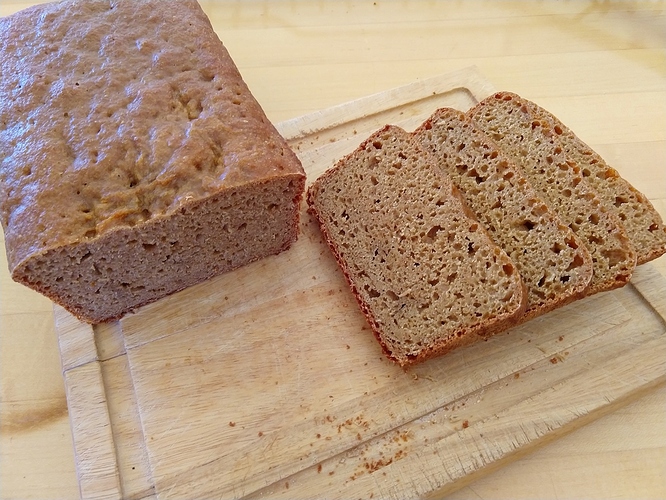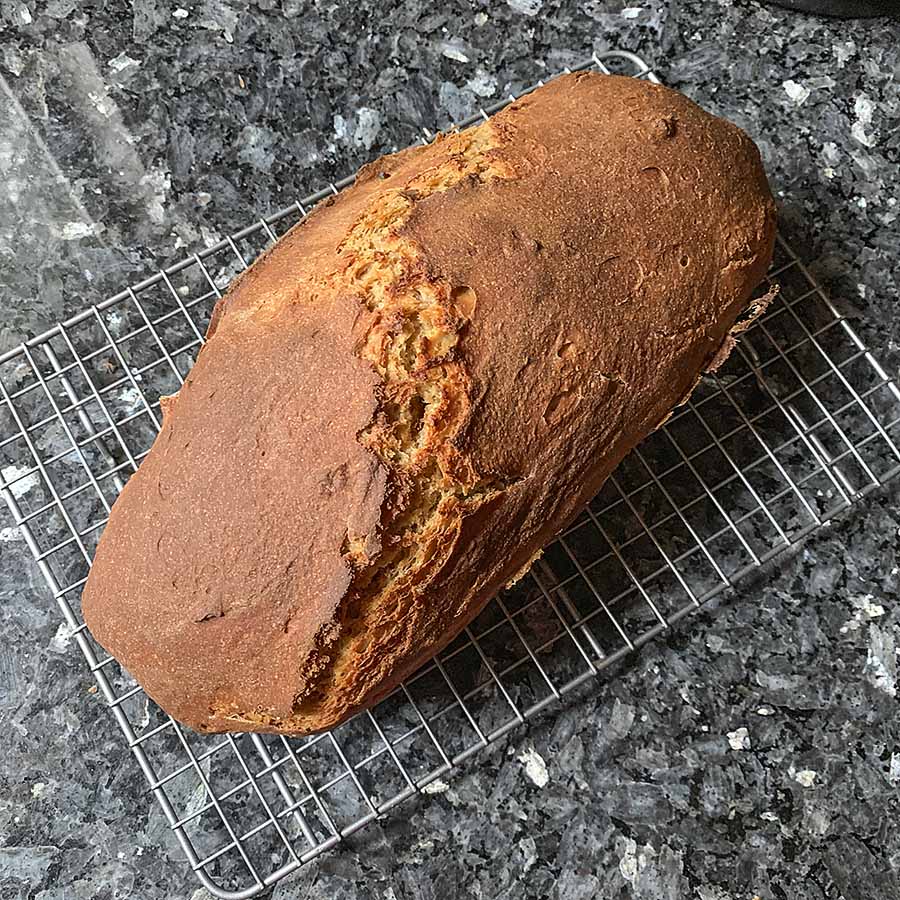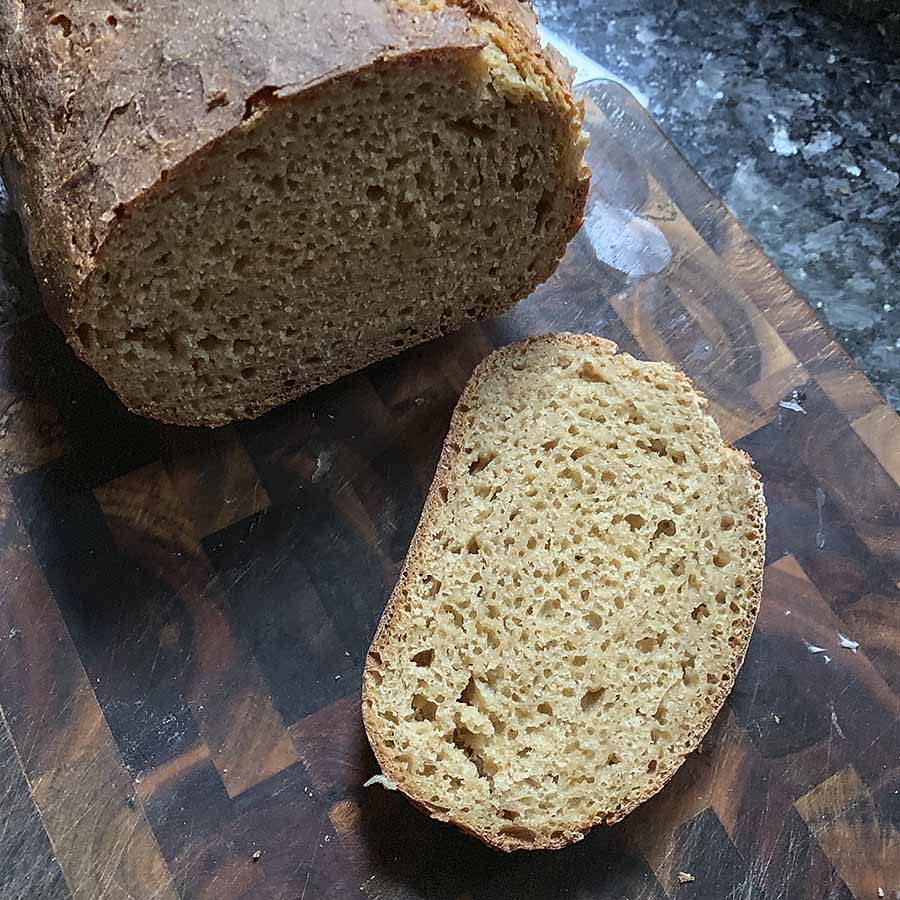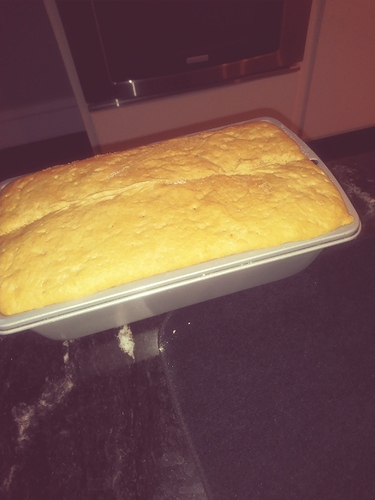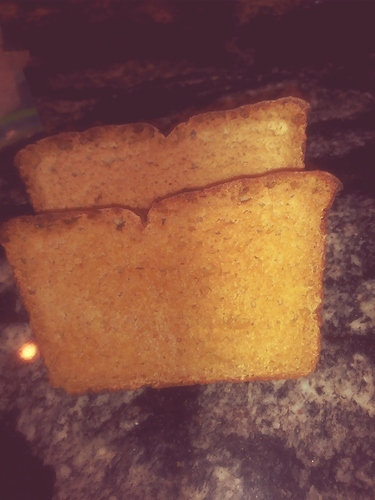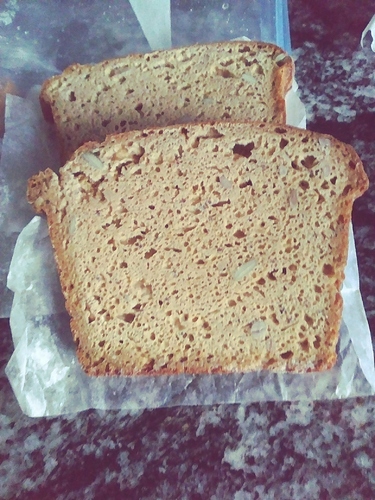Thanks, Melissa, for another great recipe, can’t wait to try this one as einkorn is my go to wheat for most of my bread baking. I always use the clay bakers. Haven’t tried the metal pans because the one time I tried it kinda burned to the point it looked liked a black hard rock. will defiantly try yours. It amazes me where you find the energy to bake that much bread. Glad you do because all the recipe you write, and I try they all come out very well.Used to have a problem with sticky flour until either you, or someone on this site said to solve the sticky hand problem was to dip your paws in a bowl of water. thank you and have a bless day.
@brewcat Yes, these strategies are good for all whole grain rye bread too! Good luck sourcing einkorn.
@DennisM You’re welcome! May your future einkorn baking be brickless : )
@mccauleyt63 I’m glad you’ve found Breadtopia and my recipes clear and useful. I love clay bakers, too, and with a side-walled one, you may be able to do this recipe. The time and temps in this recipe should prevent a black rock in the metal pan, though 
I made the einkorn bread the other day in a slightly hybrid version of your several variations. I added honey but not milk, and the bulk fermentation went to about 100% rather than 75% by accident, but my results were pretty much identical to yours. Thanks so much for coming up with a workable recipe for this unique grain, it was a really interesting bake, different from any other. The bran of my einkorn must be very thin and delicate because the flour that it produced was remarkably soft and fluffy, more than any grain I’ve ever milled with the Mockmill, almost creamy in texture. The dough had pretty good body but was, as you warned, very sticky. The crust was a beautiful reddish-brown color and my scoring completely disappeared just as your did even though there was some modest oven spring and a domed top. The crumb was very moist, moderately dense and fine. I was able to cut very thin slices, something I can’t do with other whole grain breads. And the flavor was lovely and unique. I will happily make this again and again.
Made the bread last night and turned out just like your pictures. Perfect.
@wendyk320 and @DennisM I’m so glad the recipe worked for you both! Thanks for sharing your experiences.
I think there is wiggle room in the fermentation, and I agree the flour is sooo silky. I liked it for Pop-Tarts/hand pies a while back probably for that reason…gotta do that again 
Thanks for this recipe, Melissa.
I made something like the lean version with a few modifications:
- instead of 600g of berries, I used 650g
- instead of 420g of water, I used 455g
- instead of 100g of einkorn starter, I used ~ 10g of cold, unfed, white starter
- instead of scoring, I ham-handedly messed up the top of the proofed dough by clumsily allowing the plastic I used to cover it during proofing to get stuck to the top so when I took it off it made a mess
 .
. - Trying for a thinnish, sandwich-bread crust, I reduced the baking temperatures.
I mixed up the ingredients all at once in a stand mixer for about 15 minutes and then scooped the dough / batter straight into a buttered bread pan and let it proof in there overnight. When the dough had risen up near the top of the bread pan, I put it into a pre-heated 425F oven using your very nice foil steam invention for 30 minutes and then uncovered and reduced oven temp to 350F for another 35 minutes.
I didn’t get any oven spring at all, but I may have over-proofed it some. Next time I’ll try baking a bit earlier. Though the internal temp was 210 when I took it out, I could have probably added another 5-10 minutes of uncovered baking time at my reduced temps. Still, I’m happy with the crumb and the flavor is very good. It’s a nice sandwich loaf.
Did you increase berries and water, decrease starter to keep things mostly Einkorn while using your white starter?
Nice looking bread! It’s great to know that the entire fermentation can take place in the loaf pan. With a domed plastic cover next time 
I trashed the surface of one of my test loves by trying a lovely (homemade paper) stencil that stuck to the dough and basically had to be ripped off. I used a wet spatula to smooth the surface again, but it was oddly pale from the all-purpose flour of the stencil that I had to smear around 
Thanks for sharing your experience with some modifications…really cool that you can use so little starter.
Yeah, I was trying to keep the volume and hydration about the same as Melissa’s recipe knowing that I wanted to use a small amount of white starter. Most of the changes I made were 100% due to laziness ![]() .
.
This bread has a great texture for open face kinda things. I think it would be the bomb with some cream cheese and smoked salmon on it.
Next time I think will keep a lot of my changes but try the enriched recipe, aiming for a somewhat softer sandwich bread.
Thank you. Yeah doing just one fermentation right in the loaf pan and no attempt at shaping this sticky dough made it super easy.
I’ve made sourdoughs from both whole and sifted einkorn. I prefer the taste of rye and spelt over wheats, however, but love love love using einkorn in muffins with berries!
Thanks for the info … I was going to make the enriched with 100% sub of my white starter, but you have me thinking!
I made the enriched version yesterday: used my “white” starter (WheatMontana AP & water, 100% hydration), Kefir instead of milk (had more kefir than milk in my frig), Breadtopia milled whole wheat Einkorn. All measures the same as the recipe states.
I used a stand mixer: 10-12 minutes approximately. Dough looked like a very thick cake batter. I scraped into a new bowl and the bulk went close to 7 hours to double.
My bread pans are smaller than the recipe calls for and looking at the dough volume, I decided to bake in my Breadtopia oblong clay baker vs bread pans. I scraped the dough into an oblong banneton lined with parchment. Followed the wet spatula routine to smooth the top and let it rise for about 1.5 hours.
Then into the preheated oven/baker: 500F for 5 min, 450 for 30 min, uncovered and 425 for 10 minutes. At that point, even though internal temp was 199.5 vs called for 205, based on aroma, crust, how the temp prob went in cleanly … I stopped the bake and cooled overnight.
When I make this next time, I might try 1.5 recipe to fill out the baker. But WOW - very happy with texture, crust and especially taste. I’ve not had Einkorn previously and I really love it. I don’t have gluten issues so will stick with the white starter for the extra rise and crumb. This sliced easily, is not crumbly, makes great toast!
Thanks Melissa (@Fermentada) and Breadtopia!
Beautiful loaf! It did so well in the oblong baker too – that’s great info to have. Thanks for sharing your results 
I have made this “enriched version” twice with great results. The dough though does not proof up to the size in the instructions and the first loaf was over-proofed (see pictures.)
The second time I made it did not rise at all in a warm room after 8 hours so I mixed in a teaspoon of instant yeast, scraped into a 9x5 pan let rise to the top and was perfect. Should have taken a picture but spouse wanted it too quick. 
Interesting - perhaps our pans are slightly different in shape. Not sure why your second loaf didn’t rise with only sourdough. Your final bread looks good though, nice save!
regular 9x5 loaf pan. My starter was not active enough and I hoped it would do so in the long fermentation BUT I found out different. MY BAD! LOL
I managed to get a picture of the last of the frozen slices before my better half gets them this morning.
As far as proofing is concerned I have gone through about 60#'s of Einkorn in different recipes and I have never (not even once) been able to get it to rise like in the pictures of the Naturally Leavened recipe. It gets fermented, and raises but only I would say 20% more of its original size. When panned (this loaf) it is about 3/4" from the top of the pan and I have found if I let it rise just to the lip it has a nice dome to it. It will go a little further but will sink in the middle. I have read that this 20% or so is typical of the grain. Also through my trial and errors (mostly errors) I have learned not to mix too much or knead much either.
I had to look back at my photos to get a sense of how far I pushed the proof  My endpoint is about 3/4" under the pan edge too from what I can tell. I agree that if you go much farther, you risk a flat or even sunken middle.
My endpoint is about 3/4" under the pan edge too from what I can tell. I agree that if you go much farther, you risk a flat or even sunken middle.
I once tried an einkorn “microlevain” (tiny amount of starter) which i see as comparable to your attempt with somewhat inactive starter. It was very flat. Enzymes in the dough won out over whatever bit of structure was being built through the very slow fermentation. That’s my narrative-type explanation “it was an epic battle!” rather than scientific lol.
Hi @Fermentada,
I’m new to bread baking and am wondering if this recipe would work with home-milled Emmer Wheat Berries? I don’t have any Einkorn on hand.
Thanks!
Cool. I think the process will work well, but you may need more water to arrive at the same dough feel.
That said, I wrote the recipe below a few years ago with all whole grain emmer, and the hydration was pretty low–to allow it to be freestanding loaf.
If you’re looking to do a pan loaf, I’d do the same or higher hydration as the einkorn recipe, but maybe add water slowly and play things by ear.
I’d love to see how it turns out!
